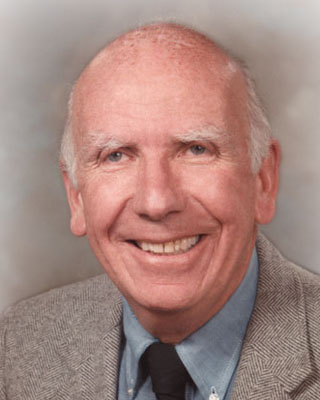by Margaret Kivelson, Professor Emerita of Space Physics, UCLA
As I prepare these words, I know I shall be using some that others will also use. One cannot write about Leon without the words brilliant, creative, deep, original, enthusiastic, ebullient, witty, fun‐loving, caring. We have lost a towering figure in his field of research and in his university, and a loving friend.
One can learn much about people from the company they keep, and today's assembly tells a great deal about Leon. For starters, the numbers alone reveal how much he meant to those who interacted with him. Family members are prominent among us, and their importance to Leon was inestimable. He adored his children: Rachel, Kate and Michael, and was intensely and justifiably proud of their accomplishments. His remarkable Jo was ever in his thoughts and the center of his life. Leon's diverse scholarly interests account for the presence among us of colleagues from a broad segment of the scientific community, friends and admirers who have come from far and near. Many physicists are famous for their musical interests but, to my knowledge, Leon was the only one who actually held an appointment in a music department, and likely some among us come to remember Leon, the musical maestro. Across the campus and across the world: in France, Germany, England, China, Italy, Chile, those who valued deep thinking and high principles sought Leon's wisdom and companionship. He was deep, indeed, but I have little doubt that his creativity was linked closely to his sense of fun. He was often playful and brought warmth to his environment with a ready smile and an infectious laugh. I shall leave to others the task of describing Leon's central scientific contributions, for which he was rightly honored, but I do have one scientific memory to contribute, worth noting because it showed how Leon's playfulness and his science were closely linked. In illustrating the role of friction in stabilizing stress until some critical level is reached, he modeled his mathematics by linking wooden blocks, probably children's toys, with springs. Placing them on a tabletop, Leon began to pull the first block until friction no longer held the second block in place. Continued pulling produced sequences of convulsions of ever increasing length, a pretty good proxy for a sequence of earthquakes. I can't think of a better way to have communicated some fundamental and simple ideas about earthquakes to a non-seismologist.
I have a few more reminiscences to share. My husband, Daniel, and I loved antique vases, mostly classical Greek. With such an interest, one soon learns that because ceramics do not normally contain organic matter, it is very difficult to date ancient pottery. However, shortly after we came to UCLA, we found that Leon and George Kennedy were developing a technique called thermoluminescence that could provide dates by warming ceramics and measuring the number of electrons released. The readily liberated electrons are not present in newly fired pottery but grow in number over time as radioactive material within the clay decays. Thus by counting electrons, one can work out how long ago a pot was fired. This was a perfect example of a problem that would capture Leon's interest, a problem of importance to history and to esthetics, solved with the tools of science.
In early days of IGPP, we had weekly lunches at which people talked about their science. One day Leon showed up with ‐ whatever was the technology of the days before iPods ‐ to play a new piece of music that he had written using a then rather uncommon tool, a computer. He had developed an algorithm that took some standard earthquake index as input and associated musical notes, their duration and intensity, with features of the earthquake data to produce a musical piece. He entitled it "Das Lied von der Erde," and was particularly happy with "the Kern county movement."
Yet another treasured memory relates to fun and music. Leon and Jo invited me to have dinner with them one evening and it was, of course, great fun to visit with them, but what made the event special was the prelude. With Leon at the piano, we sang our way through Gilbert and Sulliavan's "Trial by Jury." I knew most of the words but could get quite far off on the tunes. Leon and Jo, both wonderfully musical, made it clear that the point was to have fun and not to worry about all of my wrong notes.
When I think of Leon, of course I remember the inspiring IGPP Director, the scientist who was a member of every significant scientific society that includes geophysics, the committed teacher and supportive colleague, but what I think of most often are Leon's body laugh and happy smile. How I miss their message of involvement, interest, and affection.
 L E O N K N O P O F F ____________________________________________________________________________________________________________
L E O N K N O P O F F ____________________________________________________________________________________________________________